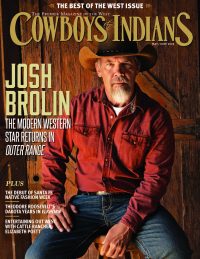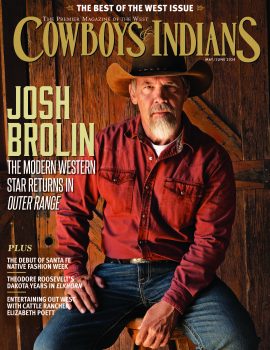This impressive spread on Montana's Rock Creek, a Blue Ribbon trout stream, ranks as the only five-star ranch resort on the Forbes Travel Guide list. Chef Josh Drage's rustic-yet-refined cuisine is one of the reasons why.
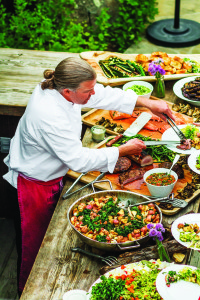 When Josh Drage — the executive chef at The Ranch at Rock Creek outside of Philipsburg, Montana — talks about the puttanesca he cooked last night, the story starts with him as an impressionable, food-obsessed college student.
When Josh Drage — the executive chef at The Ranch at Rock Creek outside of Philipsburg, Montana — talks about the puttanesca he cooked last night, the story starts with him as an impressionable, food-obsessed college student.
“I was reading these outdoor guys who were writing about food and bears,” Drage says. “Puttanesca comes up. Jim Harrison [author of Legends of the Fall] is a big foodie — he’d write about the fiery puttanesca he had with [author-naturalist Doug] Peacock. I’d read those stories and pick things up. Then I read about braising shanks of lamb with anchovy, which led to the idea of pairing game meats and puttanesca sauce.”
A few years later while on a canoe trip with a friend, inspired by the thought of using the pungent pasta sauce as a braising liquid, Drage tried his own version with venison on the banks of the Flathead River. Years later, puttanesca still on the brain, Drage is serving it yet again — this time braising an elk chuck roast with the requisite mix of olives and anchovies.
He’s come a long way since those college food daydreams. And so has his technique.
“How the dish looked on banks of the Flathead compared with how it looked last night — it’s a matter of getting a dish refined to the point that you can serve it at a Relais & Chateaux property,” Drage says.
Refined yet rustic, The Ranch at Rock Creek is the Bonanza-inspired childhood dream of investment banker Jim Manley. It began as his quest to find the perfect valley with the perfect view — the perfect site on which to build the perfect ranch. It took 20 years of looking and even more years of planning and executing to arrive at what Manley had envisioned as a dream getaway for family and friends.
Over time, his personal Ponderosa evolved into an impressive spread (10 square miles) where he could also entertain guests from all over the world. The particularly well-heeled come for the view and the atmosphere, the activities and the service — and, of course, the incredible food, which has helped The Ranch at Rock Creek earn its coveted five-star rating from Forbes Travel Guide.
C&I talked with Drage about sourcing locally, cooking rurally, and having the best view ever out the kitchen window.
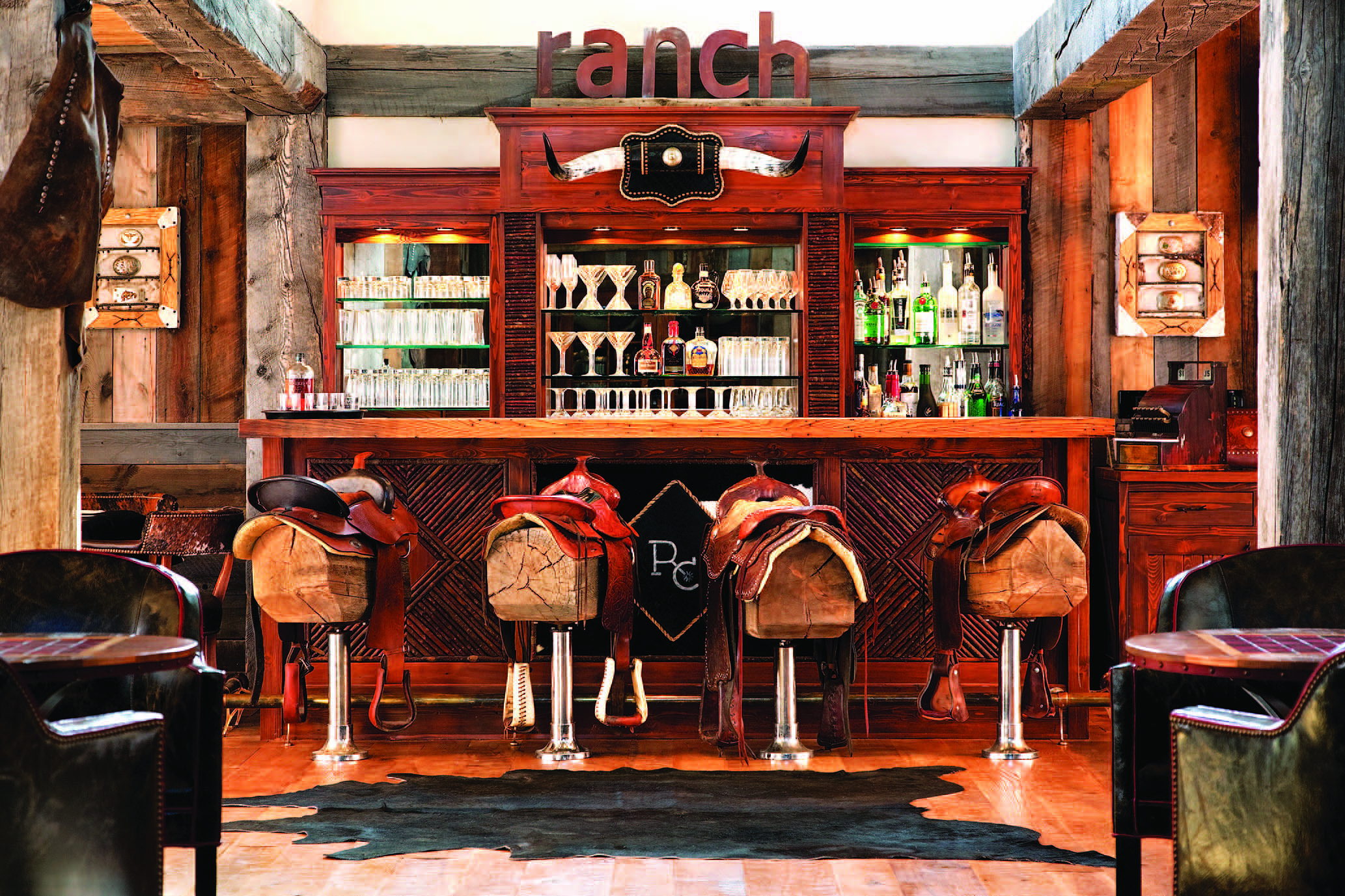
Cowboys & Indians: Does your culinary sense of place in Montana relate at all to your earliest cooking growing up in Alaska?
Josh Drage: I really developed my love for cooking in Alaska. I learned to cook out of Dutch ovens from my grandma and would use a Dutch oven at our mountain cabin in the Rainbow Valley, outside Anchorage. We had an old Majestic wood stove we cooked on. I’ve pulled a lot of rustic recipes for the ranch. On Sunday nights, we prepare Dutch ovens for an outdoor dinner in surprising locations around the property. The Dutch oven really lends itself to the ranch. Here, I might be doing pork shoulder, caramelized onions, and figs in a Dutch oven. We have a kitchen and then 6,000 acres. And we can blend the two.
C&I: How does your location figure into what ends up on the plate?
Drage: The place where you live is important in ranch cuisine — it defines what is on the plate. Western Montana is my “grocery.” We coordinate weekly to get ingredients out here. There are lots of organic farms in the area — the Bitterroot, Clark Fork, Flathead Valley — to draw from. The local organic farm order is placed on Monday. They’ll pick on Tuesday morning, and it arrives Tuesday evening.
C&I: How do you define the kind of cooking you’re doing, ranch cuisine?
Drage: A big part of ranch cuisine — what differentiates it — is a ranch is home-based, and Western cuisine is working and traveling from point A to point B. Western food is typically more fuel for the cowboys and cowgirls out working, so you don’t necessarily have as much story line of flavor and a personal aspect.
On a ranch, you typically have someone who does most of the cooking, and they’re bringing flavor and influence into a ranch. That defines what that ranch’s cuisine looks like. It doesn’t travel. Influences come in and become part of the repertoire and part of the story.
C&I: Where do some of your influences come from? Do you range far afield?
Drage: We gather flavor from other cattle-producing areas around the world. I am inspired by the working kitchens in these areas. I have an opportunity to bring the stories and the flavors to our ranch. We try to share the stories about why the dishes exist — in flavor and in place. We’re in western Montana. Place is a big part of ranch cuisine.
Places like Argentina, Mexico, Spain, Italy, and the south of France — they all have their own cattle cultures. From Argentina we pull chimichurri in the summer when we’re getting great local herbs like parsley and oregano. From Mexico it might be roasted poblano chiles turned into rajas con crema. When we’re pulling these meals together, it’s not like we’re doing a themed Mexican night. Instead, we’re adding an element to accompany something signature we do here.
If we’re pulling from Italy, it might be sugo puttanesca — lots of anchovies are key, along with the roasted tomato, olives, a little spicy red chile. If it’s France, a lot of popular dishes might be peasant applications and style preparations, like, say, cured duck confit done more ranch-style in fall and winter. From Spain, mussels in smoked paprika.
That’s the concept of cooking in cattle-producing areas — putting together a weeklong menu using quality local ingredients, in our case from western Montana. Food is such a sensory experience. It can really acquaint you with land and local culture. And the actual dining experience is also something memorable you take home with you.
C&I: Are you able to work with local growers? Montana is certainly known more for its glaciers than its produce.
Drage: When I’m talking to guests, I might be telling them about the tomatoes that came from, say, Clark Fork Organics in Missoula to make the sauce. It’s awesome because Kim [Murchison] and Josh [Slotnick] down there pour their whole lives into growing these tomatoes. The awesome Sun Gold tomatoes we get from them blow away the people who come here, and I’m talking about guests coming from places where it’s easier to grow good tomatoes.
Utilizing local growers brings a whole community together in a ranch atmosphere. Community is a cornerstone of ranch cuisine. In the history of a ranch, there’s always the aspect of the pantry. Your pantry is created from who your neighbor is. Historically, there has always been a lot of bartering on a ranch. Say you had corn, beef, alfalfa, but not honey, eggs, or milk. Your neighbors defined what your pantry looked like. Our neighbors are the local producers, ranchers, cheesemakers — that’s the community aspect of our ranch. It’s key.
You can only grow so much in Montana, so things that grow well, grow well. And the farms that get into growing these things, that’s all they’re doing. I’m a cook. I’m going to take the great stuff I can get around here and highlight it in the dining room for the guests. That helps continue their stories from ground to table.
C&I: What are some of your favorite Montana ingredients to work with?
Drage: I really have been excited about whole hogs from Tucker Family Farm in the Bitterroot Valley. We’ll cure pork bellies and smoke them making bacon. We’ll roast whole pork loin over hardwood — we did that over the Fourth of July weekend and just cut and served it with a salsa verde.
We’ll braise the shoulder for pork sandwiches in The Blue Canteen. We’ll cure and smoke hocks for barbecue beans. We cure and smoke our own ham. We made heads into headcheese for last year’s Autumn Harvest Weekend. We do the same with whole beef from Mannix Family Ranch [in Helmville] — use the whole animal.
Same with lamb from Willow Spring Ranch out of Bozeman. I’m getting these custom-cut thick porterhouse cuts. They have tenderloin strip and bone. We serve the lamb, which is mild and light, with merguez sausage — a seasoned mutton sausage they make.
It sounds like a lot of meat, which of course is a star in ranch cuisine, but even vegetarians can eat really well. Ranch cuisine works so well because the accompanying components of vegetables really make meat come alive. So you’ve got great veggies, legumes, sauces, greens. Kale grows like crazy in Montana, so it’s all over our menu. Also collard greens and Swiss chard grow real well. It’s easy to have vegetarian meals because we’re always looking at the supporting cast that goes with the marquee meat.
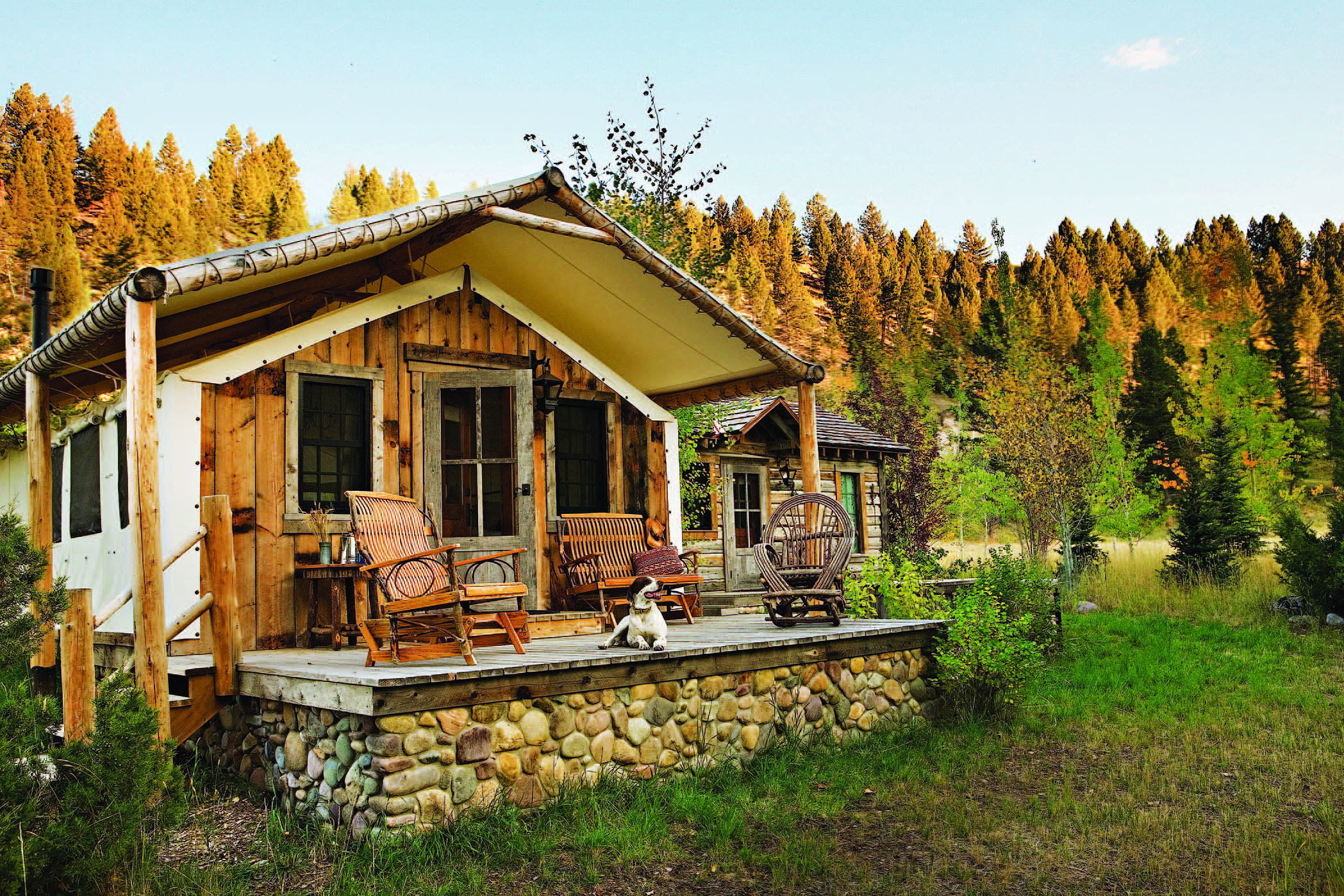
C&I: How about for those of us with a sweet tooth?
Drage: Flathead Lake cherries in midsummer. We’ll make Flathead cherry milkshakes and serve them with chocolate biscotti. We’ll take Flathead Lake Cheese Gouda and crisp the cheese on a hot cast-iron pan and serve it with pickled Flathead Lake cherries and cherry mostarda. Pickling is big. Historically on ranches you eat fresh or you pickle and save for later.
C&I: Have you found it hard to be a chef way out in the wilderness?
Drage: We’ve got a great crew. You’re never going to be a chef at a great high-caliber restaurant without a great crew. For people who want to cook great food and do so rurally, there aren’t necessarily a lot of opportunities. Our kitchen allows the crew to live rurally and cook at a very high level. Sure, you probably won’t be a hot famous chef, but you don’t have to work in a big city to have exceptional cuisine.
It’s different out here for sure — in a good way. My commute is definitely better. And when the chefs take a break, we can go floating on the river, fishing, skiing in winter, hiking. Those kinds of life perks are why you want the balance of living rurally — all those things are right out our door. Rock Creek floats right through the middle of the ranch. I can work till 8 p.m. and go floating. There’s hiking and hunting all over. The view out of the kitchen is a pastoral setting of the whole ranch, over Rock Creek to the fields on the other side and the cattle on hills.
I like to joke that we have the best view of the whole ranch.
Recipes:
The Ranch at Rock Creek Beet Salad
Fried Green Tomatoes With Smoked Montana Trout
Braised Elk Roast With Puttanesca Sauce
The Sapphire Range Frittata
The Silver Dollar Saloon Cocktail Recipes
From the October 2015 issue.



